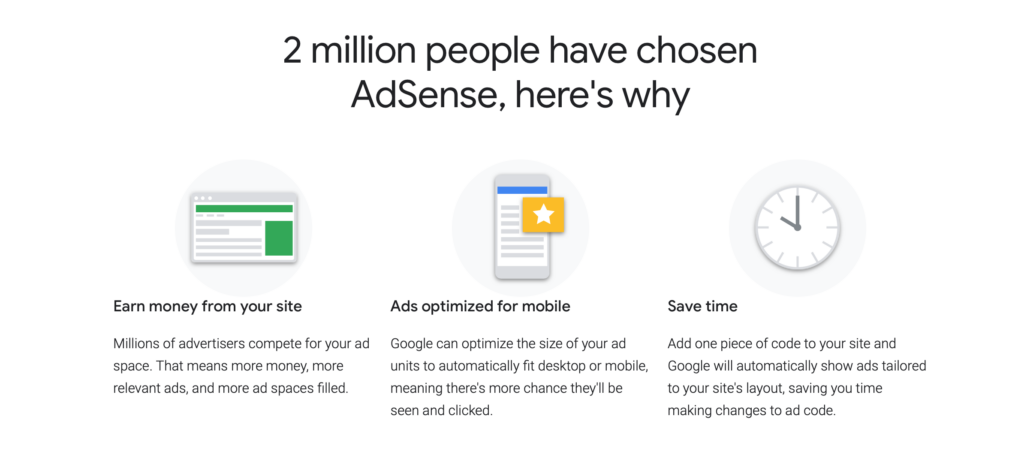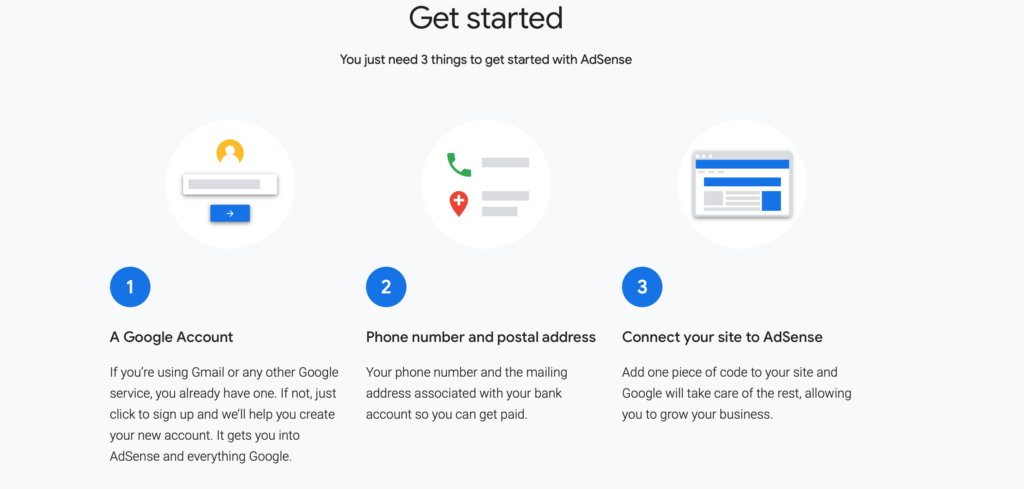Google AdSense is the gold standard in monetizing website content, but it’s also one of the most misunderstood platforms. If you are new to Google AdSense, you may be wondering how to add it to your WordPress site.

Fortunately, adding AdSense to WordPress is a relatively simple process. Let’s walk through adding AdSense to WordPress pages, posts, and widgets with plugins and manually.
Before you start adding AdSense to your WordPress site, there are a few things you need to do:
Create a Google AdSense account.
- How to Create a Google Adsense Account for WordPress
If you already have an AdSense account, skip this step. You can sign up for Google AdSense here . Create a Google Analytics account.
Google Analytics is a free web analytics service offered by Google that tracks and reports website traffic.
How to Create a Google Analytics Account for WordPress
If you already have a Google Analytics account, skip this step. You can sign up for Google Analytics here . Verify your website with Google Search Console.
Google Search Console is a free service offered by Google that helps you monitor your website’s search engine visibility and performance.
How to Verify Your Website with Google Search Console
If you already have a Google Search Console account, skip this step. You can sign up for Google Search Console here . Add the following code to your website’s <head> tag.
<!– Google Adsense Code –> <script async src=”//pagead2.googlesyndication.com/pagead/js/adsbygoogle.js”></script> <script>
function google_ad_request_done() {
</script> <!– End Google Adsense Code –> If you are using WordPress, add the following code to your theme’s <head> tag.
<!–– [if lt IE 9]><script src=”//www.googleadservices.com/pagead/js/lib.js”></script><!–– [endif]–>
How to Connect Google AdSense to Your WordPress Site

Now that you have completed the preparatory steps, it’s time to add AdSense to your WordPress site. There are two ways to do this:
Add Google AdSense to WordPress Pages and Posts with Plugins
There are a number of plugins that allow you to add AdSense boxes to your WordPress pages and posts. Here are a few of the most popular:
Google AdSense Plugin for WordPress by Richard Jackson – This plugin adds a Google AdSense box to your WordPress posts and pages. It is easy to use and has a number of configuration options.
AdSense Manager by Joost de Valk – This plugin allows you to add Google AdSense ads to your WordPress posts and pages, as well as to your site’s sidebar. It also includes options to exclude certain posts and pages from displaying ads, and to rotate ads.
WP QUADS – This plugin provides a widget that allows you to add Google AdSense ads to your WordPress sidebar.
Add Google AdSense to WordPress Widgets
Another way to add AdSense to your WordPress site is by adding AdSense widgets to your sidebars. There are two types of widgets you can use:
AdSense Widget by Joost de Valk – This widget allows you to add AdSense ads anywhere in your WordPress sidebar.
AdSense for Content by Solve Media – This widget allows you to display specific Google AdSense ads related to the content on your WordPress site.
Add Google AdSense to WordPress with Code
If you want to manually add Google AdSense ads to your site, you can do so by pasting your AdSense code into the HTML of your pages and posts.
Google AdSense – This page contains many different code examples for adding Google AdSense ads to your WordPress site.
Google AdSense for Video – This page provides HTML code examples for adding Google AdSense ads to your video content.
Once you have added your Google AdSense code to your website, it will take a few days for Google to approve your account and to populate it with ads. When the ads start showing up on your site, you can begin earning revenue by generating clicks and impressions.
How to Create Ad Units in Google Adsense step by step?
Login to your Google Adsense account.
In the top menu, hover over Ads and select New ad unit.
Enter a name for your ad unit and select a website from the drop-down menu.
In the Layout section, enter your ad code. If you want to write your own ad code, click the link to learn more.
In the Size section, select a size for your ad unit.
In the Colors section, select colors for your ad unit and click Save and get code.
If you want to show a different campaign or ad unit in each of your ad units, click Create another. You can create up to 20 ad units in 1 account.
Click Done when you are finished adding your ad units.
How to Insert Ads from Google AdSense in Your WordPress Site step by step?
Login to your WordPress dashboard and navigate to “Appearance” -> “Widgets”. Add a new widget and name it. In the text area, paste the Google AdSense ad code.
Select where in your sidebar you want to show the ad and hit “save”.
That’s it, you should see your ad now.
Choosing “AdSense for content” will add an ad unit at the bottom of posts and another at the top of pages. “Text & image ads” will add an ad block after the first paragraph of posts and another before the last paragraph. “AdSense for search” will place a small ad unit in the sidebar and “Dynamic allocation” will serve text and image ads where there are empty ad spots on the page.
Pros and Cons of Running AdSense on Your WordPress Site
Pros:
-You can make a lot of money by running AdSense on your WordPress site.
-AdSense is a very easy way to add ads to your website.
-There are a number of different ad sizes and colors to choose from.
Cons:
-You will not be earning money on all of your website traffic.
-Ad blockers, pop up blockers and script blockers can prevent you from earning revenue on your ads.
-You will need to make sure that you are adding quality content before adding AdSense code to your pages.
AdSense is a great way to monetize your website and generate revenue from your traffic. By adding quality content and using one of the methods described above, you should be able to add AdSense to your WordPress site and start earning some money today.

Leave a Reply